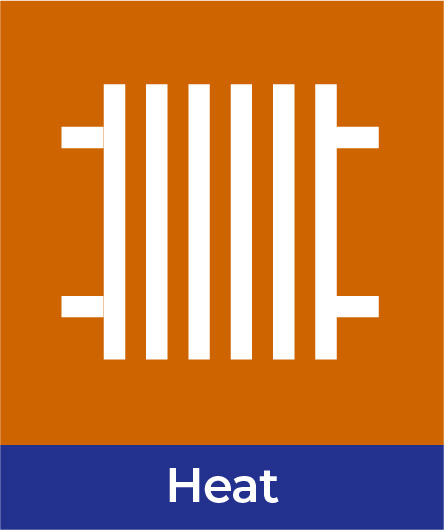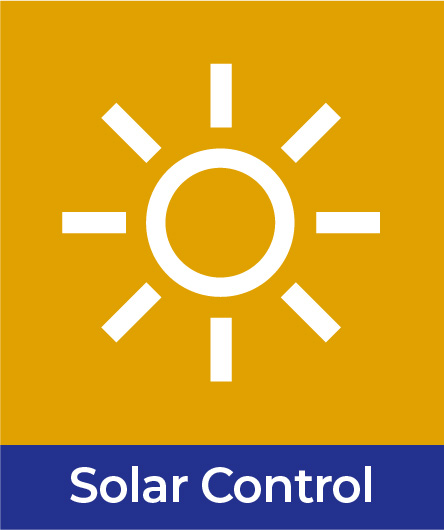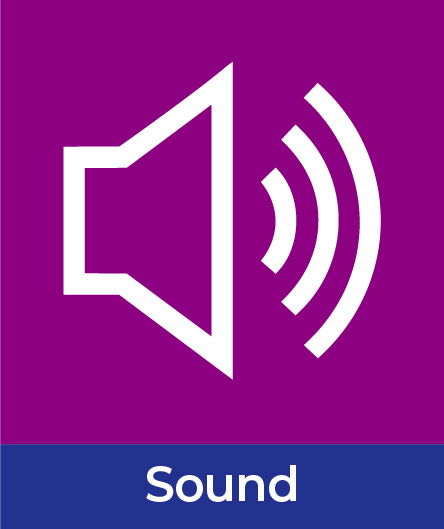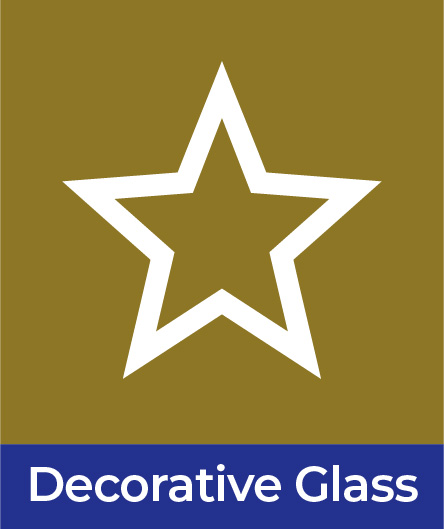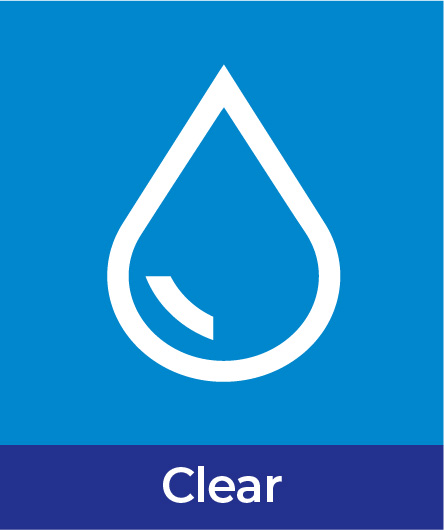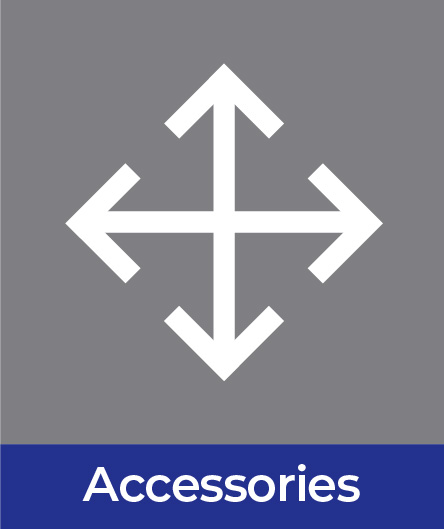Benefits
Tempered glass is glass that has been specially heat-treated to increase mechanical strength and thermal resistance.
The heat treatment of the glass -heating just above the softening point and rapid uniform cooling. In such glass, relatively high internal stresses are uniformly distributed. High compressive forces occur in the outer layers and tensile forces in the inner (thin) layers. The compressive strength of glass is 10 times higher than its tensile strength, making toughened glass very strong. This 6mm thick glass will not shatter when a metal ball weighing 0.8kg is dropped on it from a height of 1.2m. When subjected to higher forces, it breaks into honeycomb-shaped fragments of up to 100mm2 without sharp corners. Toughening increases the thermal resistance of the glass: it does not shatter in the event of a sudden temperature change of up to 270°C. Toughened glass has a flexural strength of at least 125MPa (1250 kgf/cm2), which is 5 to 7 times higher than that of plain glass.
Edge processing: polishing and sanding.
Shades: brown, grey, green, blue.
Application
Toughened double glazed units are mostly used:
- in buildings where glass breakage due to human activity is more likely to happen,
- in the gym,
- in the swimming pools,
- for facades,
- for shower cubicles and and bathrooms,
- or balcony doors,
- in the exhibitions.
Table of characteristics
| Glass Characteristic | Glass Class | Notes | ||||
| EN356 | EN12600 | |||||
| Impact resistance | 3, 2, 1 | Class 3 has the lowest impact resistance, while class 1 has the highest. | Class 3 has the lowest impact resistance, while class 1 has the highest. | Class 3 has the lowest impact resistance, while class 1 has the highest. | Class 3 has the lowest impact resistance, while class 1 has the highest. | Class 3 has the lowest impact resistance, while class 1 has the highest. |
| Type of glass breakage | A | The glass shatters into many shards of different sizes with sharp edges. The sign of breakage is characteristic of plain, thermally and chemically strengthened glass. | The glass shatters into many shards of different sizes with sharp edges. The sign of breakage is characteristic of plain, thermally and chemically strengthened glass. | The glass shatters into many shards of different sizes with sharp edges. The sign of breakage is characteristic of plain, thermally and chemically strengthened glass. | The glass shatters into many shards of different sizes with sharp edges. The sign of breakage is characteristic of plain, thermally and chemically strengthened glass. | The glass shatters into many shards of different sizes with sharp edges. The sign of breakage is characteristic of plain, thermally and chemically strengthened glass. |
| B | The glass cracks and breaks. The glass shards remain stuck to the film. This breakage is characteristic of laminated, film-coated and wire mesh reinforced glass. | The glass cracks and breaks. The glass shards remain stuck to the film. This breakage is characteristic of laminated, film-coated and wire mesh reinforced glass. | The glass cracks and breaks. The glass shards remain stuck to the film. This breakage is characteristic of laminated, film-coated and wire mesh reinforced glass. | The glass cracks and breaks. The glass shards remain stuck to the film. This breakage is characteristic of laminated, film-coated and wire mesh reinforced glass. | The glass cracks and breaks. The glass shards remain stuck to the film. This breakage is characteristic of laminated, film-coated and wire mesh reinforced glass. | |
| C | The glass breaks up into many small shards, which are almost harmless. This breakage is characteristic of thermally toughened glass. | The glass breaks up into many small shards, which are almost harmless. This breakage is characteristic of thermally toughened glass. | The glass breaks up into many small shards, which are almost harmless. This breakage is characteristic of thermally toughened glass. | The glass breaks up into many small shards, which are almost harmless. This breakage is characteristic of thermally toughened glass. | The glass breaks up into many small shards, which are almost harmless. This breakage is characteristic of thermally toughened glass. |
Files to download
Benefits
Laminated glass is made by bonding two or more sheets of flat glass with an organic film (EVA or PVB – polyvinyl butyral). The film between the heated and high-pressure glass sheets melts and glues the glasses together. This construction of the glass ensures that it is safely resistant to a wide range of mechanical damages. The glass does not shatter, even if broken, as the shards stick to the film. This provides protection against possible injury.
Laminated glass is also the most versatile glass. It can be used for UV protection. Laminated glass can also protect valuables in museums, bank premises against armed attack or other valuable assets, and ensure the safety of people working in those premises. The special structure of laminated glass makes the clear glass partition bulletproof against a pistol or even a Kalashnikov.
With laminated glass, it is possible to create a variety of interior colour combinations and drawings inside the glass sheets. In addition, coloured and patterned glass can be combined with metal, wood and other materials. The laminated glass remains the same colour and the same resistance throughout the lifetime of the building. It requires no special maintenance.
Special acoustical insulated laminated glass (with sound-insulating PVB film) can significantly reduce noise without increasing the thickness of the glass.
Shades: brown, grey, green, blue.
Application
The laminated glass is mostly used for:
- Glazed facades of individual houses and for commercial purposes;
- Production of displays, partitions and handrails.
- Windows, skylights, door glazing.
- Conservatories, sloped glazing.
Table of characteristics
| Glass | Glass Class | Safety Class | Acoustical insulation | Thickness | Weight |
| EN356 | EN12600 | Rw(C;Ctr), dB | mm | kg | |
| 33.1 | - | 2B2 | 33(-1;-2) | 6.4 | 15 |
| 33.2 | P1A | 1B1 | 33(-1;-2) | 6.8 | 16 |
| 44.1 | - | 2B2 | 34(-1;-3) | 8.4 | 20 |
| 44.2 | P2A | 1B1 | 34(-1;-3) | 8.8 | 21 |
| 44.3 | P3A | 1B1 | - | 9.1 | 21 |
| 44.4 | P4A | 1B1 | - | 9.5 | 22 |
| 44.8 | P6B | 1B1 | - | 11 | 23 |
| 55.1 | - | 2B2 | 35(-1;-2) | 10.4 | 25 |
| 55.2 | P2A | 1B1 | 35(-1;-2) | 10.8 | 25 |
| 66.1 | - | 2B2 | 37(-1;-3) | 12.4 | 30 |
| 66.2 | P2A | 1B1 | 37(-1;-3) | 12.8 | 31 |
| 66.4 | P4A | 1B1 | - | 13.5 | 32 |
| 66.8 | P6B | 1B1 | - | 15 | 33 |
Files to download
Benefits
The toughened – laminated glass is a combination of two safety glass types. It is used where increased protection of the site from wind gusts, impact and weight is required. It is usually used in floor, ceiling or roof structures. The purpose is to keep the fine glass particles adhering to the film in the event of a mechanical failure of the toughened glass, thus protecting people from accidents.
Shades: brown, grey, green, blue.
Application
Toughened-laminated double glazed units are mostly used in:
- in buildings (floors, staircases, roofs, windows, walls, frameless balconies),
- in the interior (partitions, kitchen decorative wall, glass tiles),
- in furniture (tables, shelves, tabletops)
- household appliances (ovens, fridge shelves, microwave ovens
- other (greenhouses, conservatories, car glass)
Files to download
- Toughened glass
-
Benefits
Tempered glass is glass that has been specially heat-treated to increase mechanical strength and thermal resistance.
The heat treatment of the glass -heating just above the softening point and rapid uniform cooling. In such glass, relatively high internal stresses are uniformly distributed. High compressive forces occur in the outer layers and tensile forces in the inner (thin) layers. The compressive strength of glass is 10 times higher than its tensile strength, making toughened glass very strong. This 6mm thick glass will not shatter when a metal ball weighing 0.8kg is dropped on it from a height of 1.2m. When subjected to higher forces, it breaks into honeycomb-shaped fragments of up to 100mm2 without sharp corners. Toughening increases the thermal resistance of the glass: it does not shatter in the event of a sudden temperature change of up to 270°C. Toughened glass has a flexural strength of at least 125MPa (1250 kgf/cm2), which is 5 to 7 times higher than that of plain glass.
Edge processing: polishing and sanding.
Shades: brown, grey, green, blue.
Application
Toughened double glazed units are mostly used:
- in buildings where glass breakage due to human activity is more likely to happen,
- in the gym,
- in the swimming pools,
- for facades,
- for shower cubicles and and bathrooms,
- or balcony doors,
- in the exhibitions.
Table of characteristics
Glass Characteristic Glass Class Notes EN356 EN12600 Impact resistance 3, 2, 1 Class 3 has the lowest impact resistance, while class 1 has the highest. Class 3 has the lowest impact resistance, while class 1 has the highest. Class 3 has the lowest impact resistance, while class 1 has the highest. Class 3 has the lowest impact resistance, while class 1 has the highest. Class 3 has the lowest impact resistance, while class 1 has the highest. Type of glass breakage A The glass shatters into many shards of different sizes with sharp edges. The sign of breakage is characteristic of plain, thermally and chemically strengthened glass. The glass shatters into many shards of different sizes with sharp edges. The sign of breakage is characteristic of plain, thermally and chemically strengthened glass. The glass shatters into many shards of different sizes with sharp edges. The sign of breakage is characteristic of plain, thermally and chemically strengthened glass. The glass shatters into many shards of different sizes with sharp edges. The sign of breakage is characteristic of plain, thermally and chemically strengthened glass. The glass shatters into many shards of different sizes with sharp edges. The sign of breakage is characteristic of plain, thermally and chemically strengthened glass. B The glass cracks and breaks. The glass shards remain stuck to the film. This breakage is characteristic of laminated, film-coated and wire mesh reinforced glass. The glass cracks and breaks. The glass shards remain stuck to the film. This breakage is characteristic of laminated, film-coated and wire mesh reinforced glass. The glass cracks and breaks. The glass shards remain stuck to the film. This breakage is characteristic of laminated, film-coated and wire mesh reinforced glass. The glass cracks and breaks. The glass shards remain stuck to the film. This breakage is characteristic of laminated, film-coated and wire mesh reinforced glass. The glass cracks and breaks. The glass shards remain stuck to the film. This breakage is characteristic of laminated, film-coated and wire mesh reinforced glass. C The glass breaks up into many small shards, which are almost harmless. This breakage is characteristic of thermally toughened glass. The glass breaks up into many small shards, which are almost harmless. This breakage is characteristic of thermally toughened glass. The glass breaks up into many small shards, which are almost harmless. This breakage is characteristic of thermally toughened glass. The glass breaks up into many small shards, which are almost harmless. This breakage is characteristic of thermally toughened glass. The glass breaks up into many small shards, which are almost harmless. This breakage is characteristic of thermally toughened glass. Files to download
- Laminated glass
-
Benefits
Laminated glass is made by bonding two or more sheets of flat glass with an organic film (EVA or PVB – polyvinyl butyral). The film between the heated and high-pressure glass sheets melts and glues the glasses together. This construction of the glass ensures that it is safely resistant to a wide range of mechanical damages. The glass does not shatter, even if broken, as the shards stick to the film. This provides protection against possible injury.
Laminated glass is also the most versatile glass. It can be used for UV protection. Laminated glass can also protect valuables in museums, bank premises against armed attack or other valuable assets, and ensure the safety of people working in those premises. The special structure of laminated glass makes the clear glass partition bulletproof against a pistol or even a Kalashnikov.
With laminated glass, it is possible to create a variety of interior colour combinations and drawings inside the glass sheets. In addition, coloured and patterned glass can be combined with metal, wood and other materials. The laminated glass remains the same colour and the same resistance throughout the lifetime of the building. It requires no special maintenance.
Special acoustical insulated laminated glass (with sound-insulating PVB film) can significantly reduce noise without increasing the thickness of the glass.
Shades: brown, grey, green, blue.
Application
The laminated glass is mostly used for:
- Glazed facades of individual houses and for commercial purposes;
- Production of displays, partitions and handrails.
- Windows, skylights, door glazing.
- Conservatories, sloped glazing.
Table of characteristics
Glass Glass Class Safety Class Acoustical insulation Thickness Weight EN356 EN12600 Rw(C;Ctr), dB mm kg 33.1 - 2B2 33(-1;-2) 6.4 15 33.2 P1A 1B1 33(-1;-2) 6.8 16 44.1 - 2B2 34(-1;-3) 8.4 20 44.2 P2A 1B1 34(-1;-3) 8.8 21 44.3 P3A 1B1 - 9.1 21 44.4 P4A 1B1 - 9.5 22 44.8 P6B 1B1 - 11 23 55.1 - 2B2 35(-1;-2) 10.4 25 55.2 P2A 1B1 35(-1;-2) 10.8 25 66.1 - 2B2 37(-1;-3) 12.4 30 66.2 P2A 1B1 37(-1;-3) 12.8 31 66.4 P4A 1B1 - 13.5 32 66.8 P6B 1B1 - 15 33 Files to download
- Toughened-laminated glass
-
Benefits
The toughened – laminated glass is a combination of two safety glass types. It is used where increased protection of the site from wind gusts, impact and weight is required. It is usually used in floor, ceiling or roof structures. The purpose is to keep the fine glass particles adhering to the film in the event of a mechanical failure of the toughened glass, thus protecting people from accidents.
Shades: brown, grey, green, blue.
Application
Toughened-laminated double glazed units are mostly used in:
- in buildings (floors, staircases, roofs, windows, walls, frameless balconies),
- in the interior (partitions, kitchen decorative wall, glass tiles),
- in furniture (tables, shelves, tabletops)
- household appliances (ovens, fridge shelves, microwave ovens
- other (greenhouses, conservatories, car glass)
Files to download



